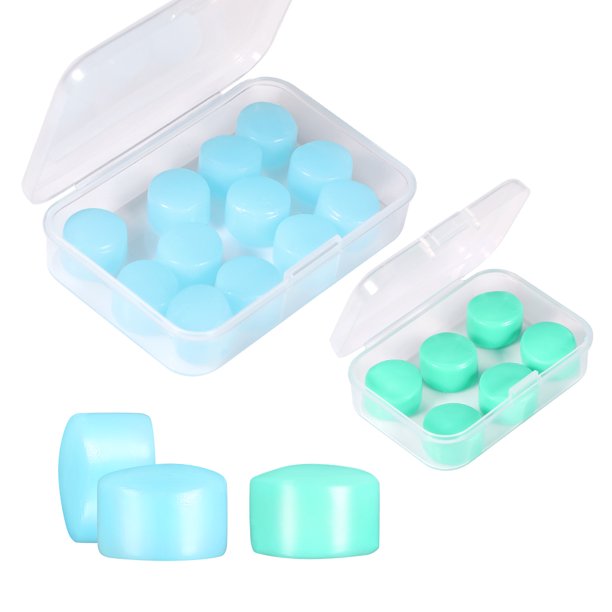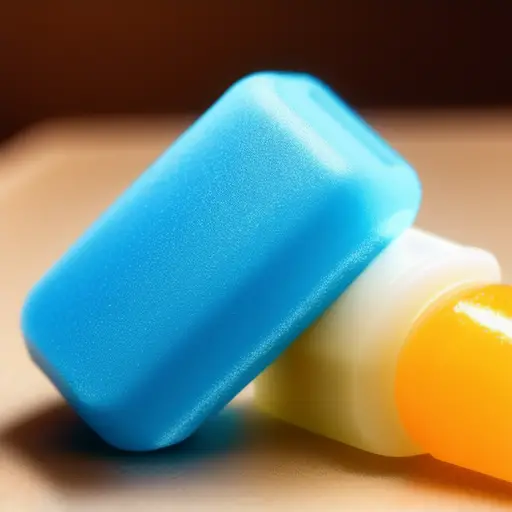Earplugs are one of the most essential tools for noise reduction or sound isolation. They are used to protect people from different kinds of loud sounds that can cause hearing loss or damage. Foam and wax are two common materials used to make earplugs. Both have their own advantages and disadvantages, making it confusing for people to decide which one to choose. In this article, we will compare foam and wax earplugs and help you decide which one is better for you.

Comfort Levels: Foam vs Wax Earplugs
When it comes to choosing the right earplugs, comfort is an essential factor to consider. For some users, foam earplugs are ideal due to their soft material and ability to be inserted deep into the ear canal, providing maximum noise protection. They are available in various shapes, sizes, and colors, making them a popular choice for many. However, some people may find it uncomfortable to have foam earplugs inserted into their ear canal, leading to issues such as ear pressure, itching, or even pain.
On the other hand, wax earplugs offer a different level of comfort as they do not require deep insertion into the ear canal. Instead, they are moldable and only need to be pressed against the ear opening to seal the ear canal entrance. This feature makes wax earplugs more comfortable and suitable for individuals who cannot tolerate foam earplugs in their ears. In addition, wax earplugs are versatile as they can be molded to fit any ear shape, providing a customized fit for each user.
In conclusion, the choice between foam and wax earplugs largely depends on an individual’s comfort preferences. While foam earplugs may be more effective in blocking noise, wax earplugs provide a more comfortable fit for those who may experience discomfort with foam. It is crucial to try both types to determine the best option based on personal needs and comfort levels.

Insertion Techniques: Foam vs Wax Earplugs
When it comes to using earplugs for noise reduction or protection, it is important to understand the difference between foam and wax earplugs and their respective insertion techniques. Both types have their own set of advantages and require different approaches to ensure correct use.
Foam earplugs are typically made from memory foam and require compressing before insertion. To use them effectively, roll the earplug between your fingers to form a thin cylinder, then gently insert it into your ear canal. Hold the earplug in place for a few seconds, allowing it to expand and create an airtight seal. This might create a slight sensation of pressure, but it is normal and indicates that the earplug is properly inserted.
On the other hand, wax earplugs are moldable and designed to cover the entrance of the ear canal instead of being inserted deep inside. To use wax earplugs, soften the material between your hands and shape it into a ball or disc. Next, gently press the wax earplug against your ear opening, ensuring a snug fit around the entrance to the ear canal. Adjust the wax as needed to achieve an effective seal.
In conclusion, foam and wax earplugs require different insertion techniques to ensure optimal noise reduction and protection. Familiarize yourself with the correct methods for each type and choose the earplug that best suits your needs and preferences.
Moldability: Advantages of Wax Earplugs
Foam earplugs have been the go-to choice for many due to their effectiveness in blocking out noise. However, their lack of moldability can make them uncomfortable for some users, particularly those with sensitive ears. This is where wax earplugs offer a significant advantage.
Made from natural wax, often beeswax, these earplugs are known for their moldable properties, which provides users with a customized fit each time. As they only cover the entrance of the ear canal, instead of going inside like foam earplugs, wax earplugs are gentle on the ears and less likely to cause irritation or discomfort. This feature makes them an ideal choice for people who find it uncomfortable to have objects inside their ear canal.
Moreover, wax earplugs have a Noise Reduction Rating (NRR) ranging from 20 to 23 dB, making them suitable for sleep, study, or moderately noisy environments. While they may not block out as much noise as foam earplugs, they still significantly reduce unwanted noise to tolerable levels.
In addition to offering superior comfort and moldability, wax earplugs also promote better situational awareness. Since they don’t entirely block out all sounds, users can still remain aware of their surroundings without compromising their noise protection.
In summary, the moldability of wax earplugs provides advantages in terms of comfort and versatility, making them an excellent alternative to foam earplugs for users seeking a gentler and more adaptable noise-blocking solution.
Noise Reduction Ratings: Foam vs Wax Earplugs
When it comes to choosing the best earplugs for noise reduction, it’s essential to understand the Noise Reduction Rating (NRR) of each type of earplug. The NRR measures the effectiveness of an earplug in reducing the surrounding noise levels, making it a crucial factor to consider when comparing foam and wax earplugs.
Foam earplugs are the most popular choice due to their superior noise-blocking capabilities. On average, foam earplugs have an NRR ranging from 28 to 33 dB. This makes them highly effective in providing maximum noise reduction, especially in loud environments such as construction sites or busy neighborhoods. However, some people may find foam earplugs uncomfortable due to their deep insertion into the ear canal, causing ear pressure and itching over time.
On the other hand, wax earplugs offer a more comfortable alternative as they only cover the ear canal entrance without entering into it. While they provide a more pleasant wearing experience, their noise reduction abilities are generally lower when compared to foam earplugs. Wax earplugs have an NRR of around 20 to 23 dB, making them suitable for moderate noise environments or when sleeping in relatively quieter surroundings.
In conclusion, your choice between foam and wax earplugs should depend on your specific noise reduction needs and comfort preferences. Foam earplugs offer superior noise-blocking capabilities, while wax earplugs provide a more comfortable option for moderate noise reduction.
Hygiene and Reusability: Foam vs Wax Earplugs

When considering hygiene and reusability, it is important to compare foam and wax earplugs. Both types of earplugs serve the purpose of noise reduction and protection, but they differ in terms of cleanliness and reusability.
Foam earplugs are generally made of soft polyurethane foam that conforms to the shape of the ear canal, providing a comfortable fit. However, due to their porous structure, foam earplugs can trap dirt, bacteria, and earwax, making them less hygienic for long-term use. Moreover, foam earplugs are usually disposable and not intended for reuse, which might not be a cost-effective and eco-friendly solution for users who require earplugs regularly.
On the other hand, wax earplugs provide a more hygienic and reusable alternative. Made from a blend of wax and cotton or other fibers, these earplugs also mold to the shape of the ear canal but without the porous nature of foam earplugs. Wax earplugs can be easily cleaned by wiping the surface with a tissue, allowing for multiple uses before replacement is needed. This makes wax earplugs not only cost-effective but also a more environmentally friendly option.
In conclusion, when accounting for hygiene and reusability, wax earplugs are a superior choice compared to foam earplugs. With easier cleaning and longer-lasting use, wax earplugs provide a more practical and sustainable solution for noise reduction needs.
Situational Use: Choosing the Right Earplugs
Deciding which earplugs best suit your needs depends on the specific situations in which you require noise reduction. When making your choice, consider your comfort, frequency of use, and the level of noise reduction needed. Here are some guidelines to help you make an informed decision.
1. Sleeping: For a comfortable night’s sleep, wax or moldable silicone earplugs are the ideal choice because they cover the entrance to the ear canal rather than entering it, providing optimal comfort. Foam earplugs, on the other hand, can cause ear pressure and discomfort after extended use.
2. Studying or concentrating in a noisy environment: Foam earplugs block out noise more effectively and are perfect for situations where maximum noise reduction is needed. However, if the level of noise is moderate, moldable silicone or wax earplugs provide sufficient noise reduction while being more comfortable.
3. Working with loud tools or equipment: Foam earplugs will again be the top choice as they offer the best noise reduction properties, essential when working in high decibel environments.
4. Swimming: Be sure to opt for silicone earplugs since foam plugs are not suitable for water use.
5. Noise sensitivity: If you find inserting objects into your ear canal to be bothersome, wax, or moldable silicone earplugs are preferred, as they merely cover the ear opening.
Remember to factor in your comfort and hygiene. Foam earplugs are disposable and should be replaced regularly to avoid infection, while wax and silicone earplugs are reusable but need to be cleaned to maintain their effectiveness.
Onset of Discomfort: Foam Earplugs
While foam earplugs are a popular choice for many individuals when it comes to blocking out noise, they may not be the ideal solution for everyone due to the onset of discomfort. Made from soft materials such as polyurethane and memory foam, foam earplugs are designed to be compressed before insertion and then expand within the ear canal to effectively block out noise. However, for some people, the pressure exerted by the expanding foam, along with the depth of insertion, can cause irritation and discomfort, especially during prolonged use.
The onset of discomfort associated with foam earplugs may manifest as a feeling of pressure within the ear, itchiness, or even outright pain. These experiences can be particularly troublesome for individuals who are trying to sleep, study, or work in a noisy environment, as they may be forced to choose between coping with the noise or tolerating the discomfort of foam earplugs.
For individuals who experience discomfort when using foam earplugs, an alternative option to consider is moldable wax or silicone earplugs. Unlike foam earplugs, wax and silicone earplugs do not need to be inserted deep into the ear canal; instead, they simply seal the entrance of the ear canal, providing effective noise reduction without the need for deep insertion. This often results in a more comfortable experience for users who are sensitive to the pressure of foam earplugs.
Versatility: Both Foam and Wax Earplugs Suited for Different Needs.
When it comes to protecting your ears from excessive noise, both foam and wax earplugs offer unique benefits tailored to your specific needs. Understanding the distinct advantages of each type can help you decide which one is best-suited for different situations.
Foam earplugs are ideal for those who require significant noise reduction as they provide a higher Noise Reduction Rating (NRR) of 28-33 dB. Commonly made of memory foam, these earplugs are inserted deep into the ear canal, providing excellent sound-blocking capabilities. They are well-suited for situations like loud concerts, construction sites, or when using machinery like chainsaws or lawnmowers. They can also be used for up to 20 times, especially when stored and cleaned properly.
Wax earplugs, on the other hand, are a gentler option perfect for those who find foam earplugs uncomfortable due to pressure or itching. With an NRR of 22-23 dB, they provide effective noise reduction while sealing the ear canal entrance rather than being inserted deep inside. This makes them a comfortable alternative for sleeping, studying, or working in moderately noisy environments. Wax earplugs are moldable to fit any ear shape and can be used for up to 10 times before losing their stickiness or becoming dirty.
Both foam and wax earplugs have their unique advantages, making them versatile options for different needs. By weighing the benefits of each type, you can make an informed decision on which earplugs best suit your specific requirements for a comfortable and effective noise reduction experience.
How to Use Wax Earplugs
Using wax earplugs is a simple and comfortable way to reduce noise while sleeping or focusing on tasks. To begin, remove the earplugs from their protective plastic case. Warm the wax gently between your fingers to make it more pliable. Then, shape the wax into a ball that is an appropriate size for your ear opening. Place the ball of wax over the entrance to your ear canal and gently press to fill the outer ear area, creating an effective seal against external noise. Wax earplugs do not need to be inserted deeply into the ear canal, making them a comfortable alternative to foam earplugs, especially for those with sensitive ears. Remember to replace wax earplugs after approximately 10 uses, or once they lose their stickiness and become dirty, to maintain proper hygiene and efficiency.
How to Use Foam Earplugs
Title: How to Use Foam Earplugs
Using foam earplugs is a simple yet effective method for noise reduction and improved concentration in various situations. Here’s how to use foam earplugs properly for maximum efficiency:
Step 1: Ensure your hands and ears are clean and dry before handling the earplugs. This will help avoid introducing bacteria and dirt into your ears.
Step 2: Roll the foam earplug between your thumb and index finger to compress it into a narrow, cylindrical shape.
Step 3: Gently pull your outer ear upwards and backwards to straighten your ear canal. This will make insertion of the earplug easier.
Step 4: Insert the compressed foam earplug into your ear canal, ensuring it is snug and comfortable.
Step 5: Hold the earplug in place for a few moments, allowing it to expand and conform to the shape of your ear canal. Once fully expanded, the foam earplug will create an effective noise barrier.
Remember to replace your foam earplugs regularly as they can accumulate dirt and earwax, affecting their efficacy and hygiene. Always follow the manufacturer’s guidelines for proper use and disposal of foam earplugs to ensure optimal performance and safety.




